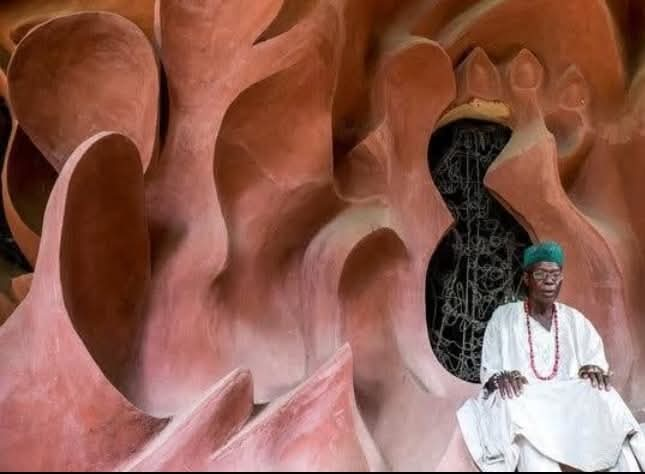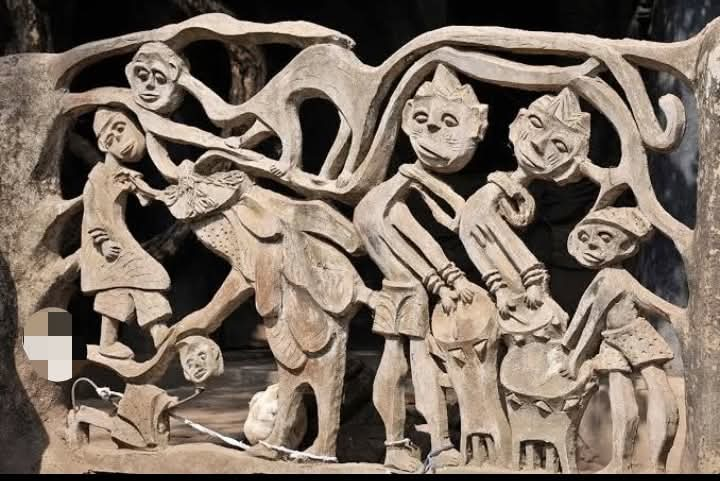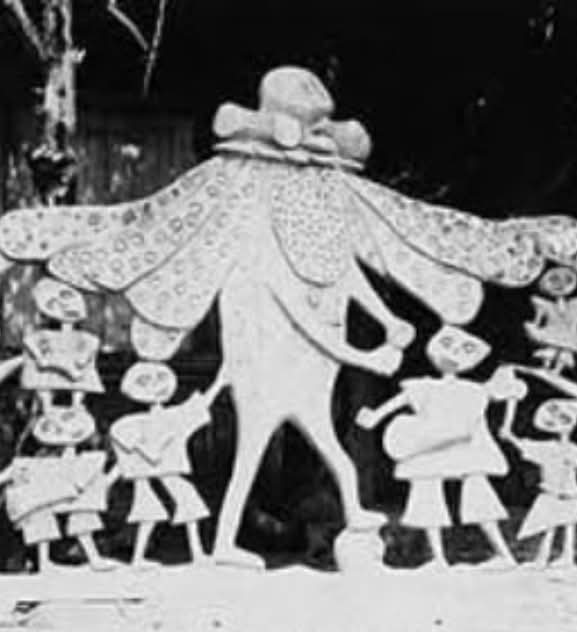
When you think of artistry that bridges culture, history, and tradition, few names resonate as powerfully as Adebisi Akanji.
Born in the 1930s, Akanji was not just any artist; he was the Olúwo (chief priest) of the Ògbóni lodge Ilédì Lárọ̀ Ohùntótó in Òṣogbo, Ọ̀ṣun State, Nigeria. But his journey to becoming a cultural icon is nothing short of fascinating.
From Bricklayer to Sculpting Legend Before his rise to fame, Akanji led a humble life working as a bricklayer.
The game-changer? A friendly competition to sculpt cement animals, inspired by the traditional architectural designs of Yoruba homes. That moment of creative spark launched his career as a sculptor and forever altered the landscape of Nigerian art.Cement Screens and Yoruba Folklore Akanji’s artistic prowess lies in his mastery of open-faced cement screens elegant, intricate designs that speak volumes about his creativity. Whether working on cement or textiles, Akanji’s creations often brought Yoruba folklore to life, weaving mythical tales into tangible masterpieces. His works were not just visually stunning; they were deeply rooted in his cultural heritage, making them timeless pieces of history.

A Decade of Divine Collaboration
One of Akanji’s most iconic achievements is his decade-long collaboration with Austrian artist Susanne Wenger on the Osun Osogbo Sacred Grove.
A UNESCO World Heritage site, the Osun shrine is a living canvas of Akanji’s imagination and skill. Many of the sculptural elements that adorn the grove standing as symbols of Yoruba spirituality and artistry are a testament to his brilliance.
Why Does Akanji’s Story Matter Today?
Adebisi Akanji was more than an artist; he was a cultural custodian who bridged the gap between tradition and modernity.
His work continues to inspire a new generation of artists, reminding us of the power of creativity and heritage.
Want to explore Akanji’s artistry further? Take a virtual tour of the Osun Osogbo Sacred Grove, and you’ll see how his genius shaped one of Nigeria’s most revered cultural landmarks.

Cultural preservation doesn’t just tell our stories—it keeps them alive for generations.
Stay tuned to AfrinityTv for more stories that bring Africa’s unsung heroes into the spotlight!
